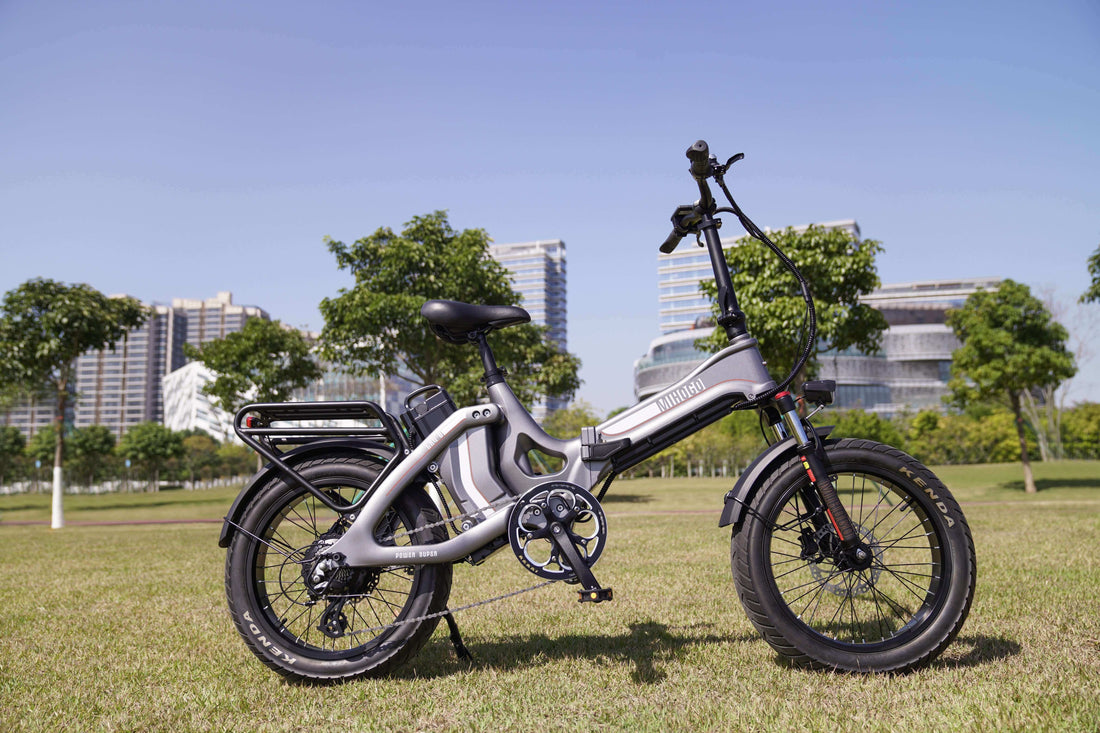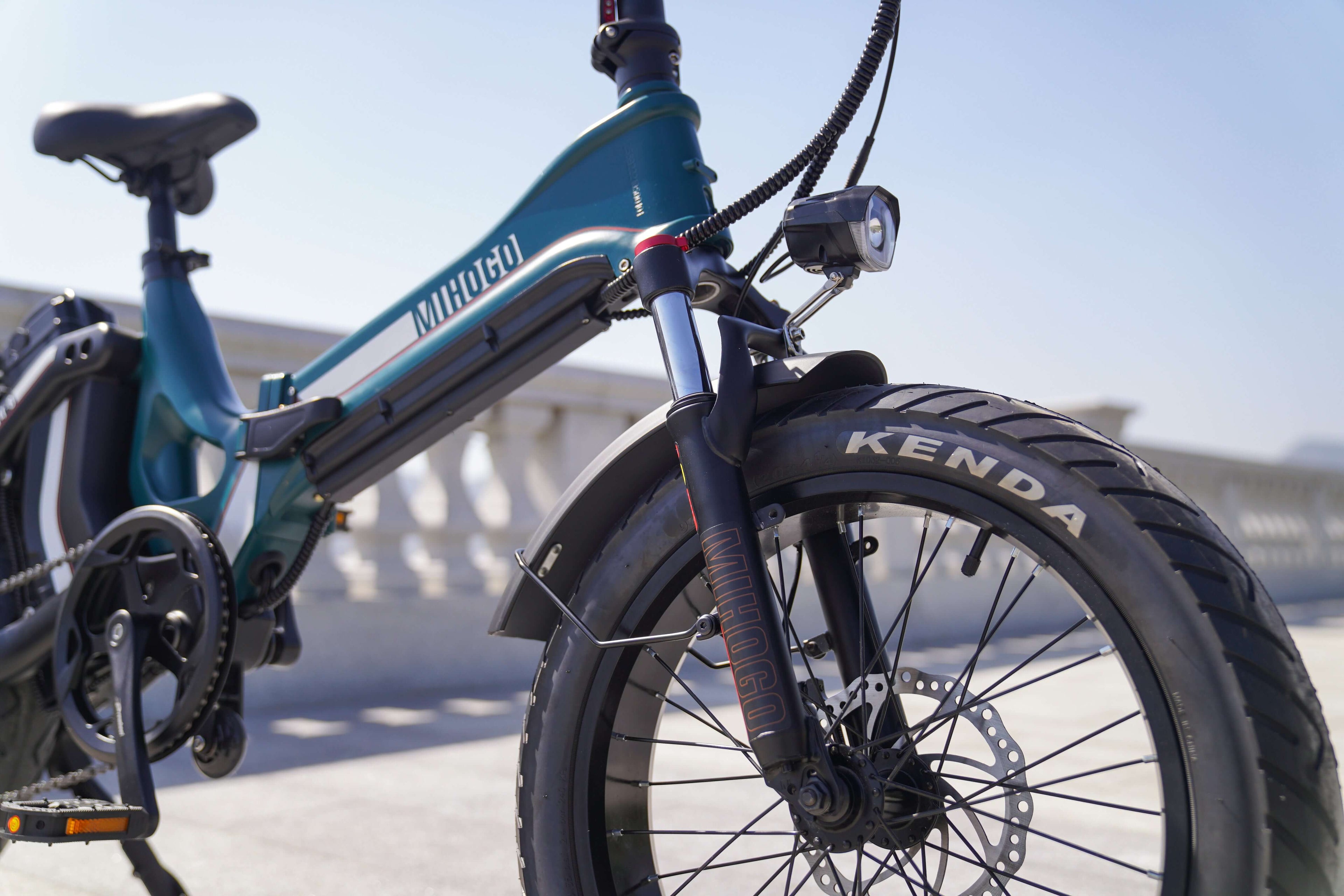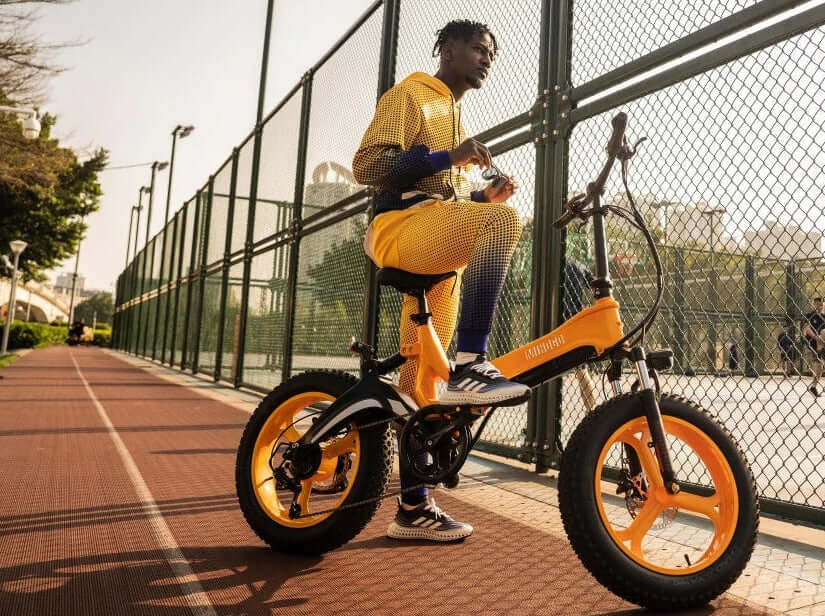Understanding E-Bike Motor Durability in European Conditions
The 5-10 Year Reality Check
European e-bike manufacturers design motors with an average lifespan of 5-10 years, assuming moderate daily use. This timeframe aligns with the typical 500-800 battery charge cycles that most lithium-ion systems provide, though the motor components often outlast the battery.
Factors affecting motor longevity:
- Usage intensity: Daily commuters average 22% more annual distance than traditional cyclists
- Terrain challenges: Mountain regions create more motor stress than urban flatlands
- Climate exposure: Northern European winters and Mediterranean summers test motor resilience
- Maintenance frequency: Regular care can double motor lifespan
Hub Motors vs. Mid-Drive Systems
Hub motors currently hold 53.8% of the European e-bike market share in 2025, prized for their simplicity and low maintenance requirements. Mid-drive systems, commanding 68.4% of premium segments, offer superior performance but require more attentive care.
Hub Motor Advantages:
- Fewer moving parts mean less wear
- Direct drive eliminates transmission complexity
- Quieter operation with better weather sealing
- Average lifespan: 6-8 years with basic maintenance
Mid-Drive Motor Considerations:
- Higher performance but more complex mechanics
- Greater interaction with bike's drivetrain
- Enhanced climbing capability for European hills
- Average lifespan: 5-7 years with proper servicing
Key Usage Factors Impacting Motor Life
Operating Hours and Riding Intensity
European commuters typically log 1,000-2,000 hours annually on their e-bikes. Motors performing optimally handle this load, but several factors accelerate wear:
High-Impact Usage Patterns:
- Frequent hill climbing in mountainous regions
- Heavy cargo transport (increasingly popular for European deliveries)
- Stop-and-go urban traffic requiring constant acceleration
- Off-road adventures on Europe's extensive trail networks
Low-Impact Riding:
- Flat terrain commuting (Netherlands, Denmark advantage)
- Consistent speed maintenance
- Balanced rider weight distribution
- Smooth pedaling assistance integration
Environmental Stressors Unique to Europe
Northern European Challenges:
- Freeze-thaw cycles affecting motor seals
- Road salt corrosion during winter months
- Extended periods of high humidity
- Temperature fluctuations from -10°C to 30°C
Southern European Factors:
- Intense summer heat affecting motor cooling
- Dust infiltration in Mediterranean climates
- UV exposure degrading plastic components
- Coastal salt air accelerating corrosion
Common Motor Issues and Early Warning Signs
Bearing Wear: The Silent Killer
Bearing deterioration represents the most common cause of premature motor failure in European e-bikes. 85% of e-bikes use lithium-ion batteries, but motor bearings often fail first due to inadequate lubrication or water infiltration.
Early Warning Signs:
- Grinding noises during acceleration
- Increased vibration through handlebars
- Reduced power output on familiar routes
- Unusual heat generation during operation
Electrical Connection Problems
Europe's wet climate creates ideal conditions for electrical issues, particularly affecting:
- Motor controller connections
- Sensor wire integrity
- Power delivery consistency
- Display communication errors
Prevention Strategies:
- Regular connection inspections
- Dielectric grease application
- Proper cable routing and protection
- Professional electrical diagnostics annually
Water Damage: Europe's Hidden Threat
Despite IPX ratings, prolonged exposure to European rain and snow can compromise motor integrity. Unlike protected car motors, e-bike units face direct weather exposure.
Vulnerable Components:
- Motor housing seals
- Electrical connectors
- Internal wiring harnesses
- Controller units
Proven Maintenance Strategies for European Riders
Regular Cleaning: Beyond Aesthetics
European riders should clean their e-bikes weekly during active seasons, paying special attention to motor areas. Use bike-specific cleaners and avoid high-pressure washing directly on motor housings.
Professional Cleaning Protocol:
- Soft brush debris removal
- Mild soap solution application
- Careful rinsing with low pressure
- Thorough drying before storage
- Protective spray application
Proper Storage: Seasonal Considerations
European seasonal variations demand strategic storage approaches. Proper e-bike storage can extend motor life by 30-40%, particularly important during harsh winter months.
Optimal Storage Conditions:
- Temperature range: 5°C to 20°C
- Humidity below 60%
- Battery removal for long-term storage
- Monthly operational checks during off-season
Professional Servicing Schedule
With e-bikes requiring more regular service than traditional bicycles due to their complexity, European riders should establish relationships with qualified technicians.
Recommended Service Intervals:
- Monthly: Basic inspection and cleaning
- Quarterly: Professional diagnostic check
- Annually: Complete motor and electrical system service
- Bi-annually: Bearing inspection and lubrication
Smart Technology Extending Motor Life
2025 Innovation Impact
Modern European e-bikes incorporate intelligent systems that significantly extend motor lifespan. AI algorithms adjust motor output based on terrain, rider weight, and riding style, with systems like the new Smart System 2.0 offering 20% longer component life through optimized energy consumption.
Motor-Preserving Technologies:
- Predictive maintenance alerts
- Automatic power modulation
- Temperature management systems
- Regenerative braking integration
Connectivity and Diagnostics
40% of 2023 European e-bike models include GPS, Bluetooth, or smart locks, enabling remote monitoring and preventive maintenance scheduling. These systems alert riders to potential issues before costly failures occur.
The Economics of Motor Longevity
Maintenance Investment vs. Replacement Costs
Proper maintenance costs approximately €300-700 annually but can extend your e-bike's operational life from 5 years to 10+ years. For a €2,000 e-bike, this represents excellent value compared to premature motor replacement.
Cost Breakdown Analysis:
- Preventive maintenance: €50-100 per service visit
- Motor replacement: €800-1,500 depending on type
- Extended lifespan value: €200-400 annually in avoided replacement costs
European Market Trends
The European e-bike market's 14.6% CAGR growth is driving improvements in motor reliability and serviceability. Manufacturers are investing heavily in robust service networks and digital connectivity solutions to support longer motor life.
Maximizing Your Motor's European Performance
Climate-Specific Strategies
For Northern European Riders:
- Winter storage in heated spaces
- Regular bearing lubrication during wet seasons
- Corrosion-resistant treatments
- Extended warm-up periods in cold weather
For Southern European Riders:
- Heat management during summer rides
- Dust protection in dry conditions
- UV-resistant motor covers
- Frequent cooling system checks
Terrain-Adapted Maintenance
Mountain Region Riders:
- Enhanced bearing protection
- Frequent drivetrain inspection
- Motor cooling system maintenance
- Professional hill-climbing optimization
Urban Commuters:
- Stop-start wear pattern monitoring
- Traffic pollution filtration
- Electrical connection protection
- Battery-motor synchronization checks
Future-Proofing Your E-Bike Investment
Emerging Technologies
European manufacturers are developing next-generation motors with improved durability. Solid-state battery integration and advanced motor control systems promise extended operational life and reduced maintenance requirements.
2025 Developments:
- Yamaha's 10-minute charging systems reducing thermal stress
- Enhanced waterproofing standards
- Predictive failure detection
- Modular replacement components
Sustainability Considerations
As European environmental consciousness grows, motor longevity becomes increasingly important for reducing electronic waste. Proper maintenance aligns with EU sustainability goals while maximizing your investment.
How Long Does an E-Bike Motor Last? Complete European Guide | Mihogo
SEO Title: How Long Does E-Bike Motor Last? Maintenance Guide | Mihogo Meta Description: Discover e-bike motor lifespan secrets! Learn how 5-10 years becomes reality with proper maintenance. Expert European guide with proven tips.
E-Bike Motor Lifespan: What European Riders Need to Know in 2025
With Europe's e-bike market projected to reach €100.14 billion by 2034, growing at 14.6% CAGR, understanding your motor's lifespan has never been more crucial for European cyclists. The typical e-bike motor lasts 5-10 years with proper maintenance, but this range depends heavily on usage patterns, maintenance quality, and environmental factors unique to European riding conditions.
Modern e-bike motors should last approximately 20,000 miles or 32,000 kilometers under normal conditions, according to industry specialists. However, with Europe's diverse terrain—from Amsterdam's flat canals to the Swiss Alps—your motor's longevity can vary significantly based on how and where you ride.
Understanding E-Bike Motor Durability in European Conditions
The 5-10 Year Reality Check
European e-bike manufacturers design motors with an average lifespan of 5-10 years, assuming moderate daily use. This timeframe aligns with the typical 500-800 battery charge cycles that most lithium-ion systems provide, though the motor components often outlast the battery.
Factors affecting motor longevity:
- Usage intensity: Daily commuters average 22% more annual distance than traditional cyclists
- Terrain challenges: Mountain regions create more motor stress than urban flatlands
- Climate exposure: Northern European winters and Mediterranean summers test motor resilience
- Maintenance frequency: Regular care can double motor lifespan
Hub Motors vs. Mid-Drive Systems
Hub motors currently hold 53.8% of the European e-bike market share in 2025, prized for their simplicity and low maintenance requirements. Mid-drive systems, commanding 68.4% of premium segments, offer superior performance but require more attentive care.
Hub Motor Advantages:
- Fewer moving parts mean less wear
- Direct drive eliminates transmission complexity
- Quieter operation with better weather sealing
- Average lifespan: 6-8 years with basic maintenance
Mid-Drive Motor Considerations:
- Higher performance but more complex mechanics
- Greater interaction with bike's drivetrain
- Enhanced climbing capability for European hills
- Average lifespan: 5-7 years with proper servicing
Key Usage Factors Impacting Motor Life
Operating Hours and Riding Intensity
European commuters typically log 1,000-2,000 hours annually on their e-bikes. Motors performing optimally handle this load, but several factors accelerate wear:
High-Impact Usage Patterns:
- Frequent hill climbing in mountainous regions
- Heavy cargo transport (increasingly popular for European deliveries)
- Stop-and-go urban traffic requiring constant acceleration
- Off-road adventures on Europe's extensive trail networks
Low-Impact Riding:
- Flat terrain commuting (Netherlands, Denmark advantage)
- Consistent speed maintenance
- Balanced rider weight distribution
- Smooth pedaling assistance integration
Environmental Stressors Unique to Europe
Northern European Challenges:
- Freeze-thaw cycles affecting motor seals
- Road salt corrosion during winter months
- Extended periods of high humidity
- Temperature fluctuations from -10°C to 30°C
Southern European Factors:
- Intense summer heat affecting motor cooling
- Dust infiltration in Mediterranean climates
- UV exposure degrading plastic components
- Coastal salt air accelerating corrosion
Common Motor Issues and Early Warning Signs
Bearing Wear: The Silent Killer
Bearing deterioration represents the most common cause of premature motor failure in European e-bikes. 85% of e-bikes use lithium-ion batteries, but motor bearings often fail first due to inadequate lubrication or water infiltration.
Early Warning Signs:
- Grinding noises during acceleration
- Increased vibration through handlebars
- Reduced power output on familiar routes
- Unusual heat generation during operation
Electrical Connection Problems
Europe's wet climate creates ideal conditions for electrical issues, particularly affecting:
- Motor controller connections
- Sensor wire integrity
- Power delivery consistency
- Display communication errors
Prevention Strategies:
- Regular connection inspections
- Dielectric grease application
- Proper cable routing and protection
- Professional electrical diagnostics annually
Water Damage: Europe's Hidden Threat
Despite IPX ratings, prolonged exposure to European rain and snow can compromise motor integrity. Unlike protected car motors, e-bike units face direct weather exposure.
Vulnerable Components:
- Motor housing seals
- Electrical connectors
- Internal wiring harnesses
- Controller units
Proven Maintenance Strategies for European Riders
Regular Cleaning: Beyond Aesthetics
European riders should clean their e-bikes weekly during active seasons, paying special attention to motor areas. Use bike-specific cleaners and avoid high-pressure washing directly on motor housings.
Professional Cleaning Protocol:
- Soft brush debris removal
- Mild soap solution application
- Careful rinsing with low pressure
- Thorough drying before storage
- Protective spray application
Proper Storage: Seasonal Considerations
European seasonal variations demand strategic storage approaches. Proper e-bike storage can extend motor life by 30-40%, particularly important during harsh winter months.
Optimal Storage Conditions:
- Temperature range: 5°C to 20°C
- Humidity below 60%
- Battery removal for long-term storage
- Monthly operational checks during off-season
Professional Servicing Schedule
With e-bikes requiring more regular service than traditional bicycles due to their complexity, European riders should establish relationships with qualified technicians.
Recommended Service Intervals:
- Monthly: Basic inspection and cleaning
- Quarterly: Professional diagnostic check
- Annually: Complete motor and electrical system service
- Bi-annually: Bearing inspection and lubrication
Smart Technology Extending Motor Life
2025 Innovation Impact
Modern European e-bikes incorporate intelligent systems that significantly extend motor lifespan. AI algorithms adjust motor output based on terrain, rider weight, and riding style, with systems like the new Smart System 2.0 offering 20% longer component life through optimized energy consumption.
Motor-Preserving Technologies:
- Predictive maintenance alerts
- Automatic power modulation
- Temperature management systems
- Regenerative braking integration
Connectivity and Diagnostics
40% of 2023 European e-bike models include GPS, Bluetooth, or smart locks, enabling remote monitoring and preventive maintenance scheduling. These systems alert riders to potential issues before costly failures occur.
The Economics of Motor Longevity
Maintenance Investment vs. Replacement Costs
Proper maintenance costs approximately €300-700 annually but can extend your e-bike's operational life from 5 years to 10+ years. For a €2,000 e-bike, this represents excellent value compared to premature motor replacement.
Cost Breakdown Analysis:
- Preventive maintenance: €50-100 per service visit
- Motor replacement: €800-1,500 depending on type
- Extended lifespan value: €200-400 annually in avoided replacement costs
European Market Trends
The European e-bike market's 14.6% CAGR growth is driving improvements in motor reliability and serviceability. Manufacturers are investing heavily in robust service networks and digital connectivity solutions to support longer motor life.
Maximizing Your Motor's European Performance
Climate-Specific Strategies
For Northern European Riders:
- Winter storage in heated spaces
- Regular bearing lubrication during wet seasons
- Corrosion-resistant treatments
- Extended warm-up periods in cold weather
For Southern European Riders:
- Heat management during summer rides
- Dust protection in dry conditions
- UV-resistant motor covers
- Frequent cooling system checks
Terrain-Adapted Maintenance
Mountain Region Riders:
- Enhanced bearing protection
- Frequent drivetrain inspection
- Motor cooling system maintenance
- Professional hill-climbing optimization
Urban Commuters:
- Stop-start wear pattern monitoring
- Traffic pollution filtration
- Electrical connection protection
- Battery-motor synchronization checks
Future-Proofing Your E-Bike Investment
Emerging Technologies
European manufacturers are developing next-generation motors with improved durability. Solid-state battery integration and advanced motor control systems promise extended operational life and reduced maintenance requirements.
2025 Developments:
- Yamaha's 10-minute charging systems reducing thermal stress
- Enhanced waterproofing standards
- Predictive failure detection
- Modular replacement components
Sustainability Considerations
As European environmental consciousness grows, motor longevity becomes increasingly important for reducing electronic waste. Proper maintenance aligns with EU sustainability goals while maximizing your investment.
Professional Service: When to Seek Expert Help
Red Flag Indicators
Certain symptoms require immediate professional attention to prevent catastrophic motor failure:
- Sudden power loss during operation
- Overheating beyond normal parameters
- Unusual noises from motor housing
- Electrical system malfunctions
Choosing European Service Providers
Look for certified technicians experienced with your specific motor system. Many traditional bike shops lack electrical diagnostic capabilities essential for modern e-bike maintenance.
Service Provider Criteria:
- Manufacturer-certified training
- Electrical diagnostic equipment
- Warranty-compliant procedures
- Access to genuine replacement parts
The Bottom Line: Investment Protection Through Care
Your e-bike motor represents a significant investment in European mobility infrastructure. With proper maintenance, realistic usage expectations, and climate-appropriate care, achieving the upper end of the 5-10 year lifespan becomes entirely achievable.
Remember these key principles:
- Regular preventive maintenance outweighs reactive repairs
- Environmental protection extends operational life
- Professional servicing prevents costly failures
- Technology integration enhances longevity
Ready to maximize your e-bike motor's lifespan? Explore our selection of premium European e-bikes designed for durability and longevity in challenging European conditions.
Essential Resources for European E-Bike Owners
For comprehensive maintenance information and regulatory guidance, consult these authoritative sources:
- European Cyclists' Federation Maintenance Guidelines - Official European cycling standards
- Wikipedia: Electric Bicycle Maintenance - Global maintenance reference guide
- EU Battery Regulation 2023/1542 - European battery safety standards






